Tag Archives: Data Science
Machine Learning Terminologies for Beginners
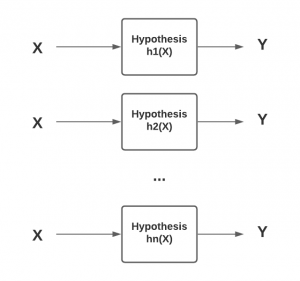
When starting on the journey of learning machine learning and data science, we come across several different terminologies when going through different articles/posts, books & video lectures. Getting a good understanding of these terminologies and related concepts will help us understand these concepts in a nice manner. At a senior level, it gets tricky at times when the team of data scientists / ML engineers explain their projects and related outcomes. With this in context, this post lists down a set of commonly used machine learning terminologies that will help us get a good understanding of ML concepts and also engage with the DS / AI / ML team in …
Machine Learning Free Course at Univ Wisconsin Madison

In this post, you will learn about the free course on machine learning (STAT 451) recently taught at University of Wisconsin-Madison by Dr. Sebastian Raschka. Dr. Sebastian Raschka in currently working as an assistant Professor of Statistics at the University of Wisconsin-Madison while focusing on deep learning and machine learning research. The course is titled as “Introduction to Machine Learning”. The recording of the course lectures can be found on the page – Introduction to machine learning. The course covers some of the following topics: What is machine learning? Nearest neighbour methods Computational foundation Python Programming (concepts) Machine learning in Scikit-learn Tree-based methods Decision trees Ensemble methods Model evaluation techniques Concepts of …
MIT Free Course on Machine Learning (New)
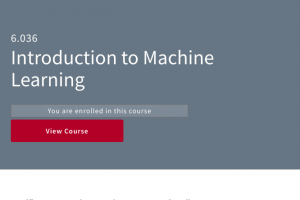
In this post, the information regarding new free course on machine learning launched by MIT OpenCourseware. In case, you are a beginner data scientist or ML Engineer, you will find this course to be very useful. Here is the URL to the free course on machine learning: https://bit.ly/37iNNAA. This course, titled as Introduction to Machine Learning, introduces principles, algorithms, and applications of machine learning from the point of view of modeling and prediction. It includes formulation of learning problems and concepts of representation, over-fitting, and generalization. These concepts are exercised in supervised learning and reinforcement learning, with applications to images and to temporal sequences. Here are some of the key topics for which lectures can be found: …
Gradient Boosting Regression Python Examples
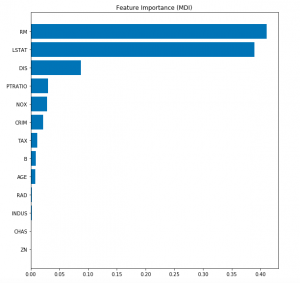
In this post, you will learn about the concepts of Gradient Boosting Regression with the help of Python Sklearn code example. Gradient Boosting algorithm is one of the key boosting machine learning algorithms apart from AdaBoost and XGBoost. What is Gradient Boosting Regression? Gradient Boosting algorithm is used to generate an ensemble model by combining the weak learners or weak predictive models. Gradient boosting algorithm can be used to train models for both regression and classification problem. Gradient Boosting Regression algorithm is used to fit the model which predicts the continuous value. Gradient boosting builds an additive mode by using multiple decision trees of fixed size as weak learners or …
Data Quality Challenges for Analytics Projects
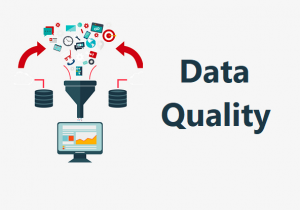
In this post, you will learn about some of the key data quality challenges which you may need to tackle with, if you are working on data analytics projects or planning to get started on data analytics initiatives. If you represent key stakeholders in analytics team, you may find this post to be useful in understanding the data quality challenges. Here are the key challenges in relation to data quality which when taken care would result in great outcomes from analytics projects related to descriptive, predictive and prescriptive analytics: Data accuracy / validation Data consistency Data availability Data discovery Data usability Data SLA Cos-effective data Data Accuracy One of the most important …
Data Science vs Data Engineering Team – Have Both?
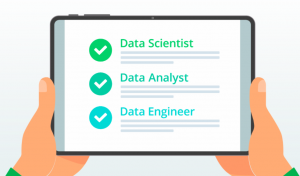
In this post, you will learn about different aspects of data science and data engineering team and also understand the key differences between them. As data science / engineering stakeholders, it is very important to understand whether we need to have one or both the teams to achieve high quality dataset & data pipelines as well as high-performant machine learning models. Background When an organization starts on the journey of building data analytics products, primarily based on predictive analytics, it goes on to set up a centralized (mostly) data science team consisting of data scientists. The data science team works with the product team or multiple product teams to gather the …
500+ Machine Learning Interview Questions

This post consists of all the posts on this website in relation to interview questions / quizzes related to data science / machine learning topics. These questions can prove to be helpful for the following: Product managers Data scientists Product Managers Interview Questions Find the questions for product managers on this page – Machine learning interview questions for product managers Data Scientists Interview Questions Here are posts representing 500+ interview questions which will be helpful for data scientists / machine learning engineers. You will find it useful as practise questions and answers while preparing for machine learning interview. Decision tree questions Machine learning validation techniques questions Neural networks questions – …
Spacy Tokenization Python Example
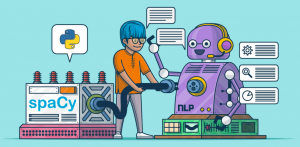
In this post, you will quickly learn about how to use Spacy for reading and tokenising a document read from text file or otherwise. As a data scientist starting on NLP, this is one of those first code which you will be writing to read the text using spaCy. First and foremost, make sure you have got set up with Spacy, and, loaded English tokenizer. The following commands help you set up in Jupyter notebook. Reading text using spaCy: Once you are set up with Spacy and loaded English tokenizer, the following code can be used to read the text from the text file and tokenize the text into words. Pay attention …
Geometric Distribution Explained with Python Examples

In this post, you will learn about the concepts of Geometric probability distribution with the help of real-world examples and Python code examples. It is of utmost importance for data scientists to understand and get an intuition of different kinds of probability distribution including geometric distribution. You may want to check out some of my following posts on other probability distribution. Normal distribution explained with Python examples Binomial distribution explained with 10+ examples Hypergeometric distribution explained with 10+ examples In this post, the following topics have been covered: Geometric probability distribution concepts Geometric distribution python examples Geometric distribution real-world examples Geometric Probability Distribution Concepts Geometric probability distribution is a discrete …
Top 10 Analytics Strategies for Great Data Products
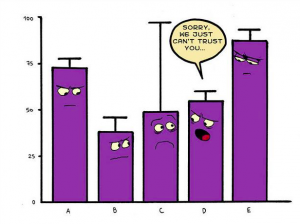
In this post, you will learn about the top 10 data analytics strategies which will help you create successful data products. These strategies will be helpful in case you are setting up a data analytics practice or center of excellence (COE). As an AI / Machine Learning / Data Science stakeholders, it will be important to understand these strategies in order to deliver analytics solution which creates business value having positive business impact. Here are the top 10 data analytics strategies: Identify top 2-3 business problems Identify related business / engineering organizations Create measurement plan by identifying right KPIs Identify analytics deliverables such as analytics reports, predictions etc Gather data …
Keras CNN Image Classification Example
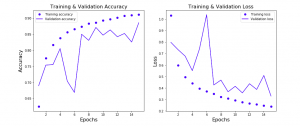
In this post, you will learn about how to train a Keras Convolution Neural Network (CNN) for image classification. Before going ahead and looking at the Python / Keras code examples and related concepts, you may want to check my post on Convolution Neural Network – Simply Explained in order to get a good understanding of CNN concepts. Keras CNN Image Classification Code Example First and foremost, we will need to get the image data for training the model. In this post, Keras CNN used for image classification uses the Kaggle Fashion MNIST dataset. Fashion-MNIST is a dataset of Zalando’s article images—consisting of a training set of 60,000 examples and a …
Data Quality Challenges for Machine Learning Models

In this post, you will learn about some of the key data quality challenges which need to be dealt with in a consistent and sustained manner to ensure high quality machine learning models. Note that high quality models can be termed as models which generalizes better (lower true error with predictions) with unseen data or data derived from larger population. As a data science architect or quality assurance (QA) professional dealing with quality of machine learning models, you must learn some of these challenges and plan appropriate development processes to deal with these challenges. Here are some of the key data quality challenges which need to be tackled appropriately in …
Python – How to Add Trend Line to Line Chart / Graph

In this plot, you will learn about how to add trend line to the line chart / line graph using Python Matplotlib.As a data scientist, it proves to be helpful to learn the concepts and related Python code which can be used to draw or add the trend line to the line charts as it helps understand the trend and make decisions. In this post, we will consider an example of IPL average batting scores of Virat Kohli, Chris Gayle, MS Dhoni and Rohit Sharma of last 10 years, and, assess the trend related to their overall performance using trend lines. Let’s say that main reason why we want to …
Python Sklearn – How to Generate Random Datasets
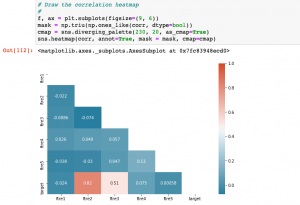
In this post, you will learn about some useful random datasets generators provided by Python Sklearn. There are many methods provided as part of Sklearn.datasets package. In this post, we will take the most common ones such as some of the following which could be used for creating data sets for doing proof-of-concepts solution for regression, classification and clustering machine learning algorithms. As data scientists, you must get familiar with these methods in order to quickly create the datasets for training models using different machine learning algorithms. Methods for generating datasets for Classification Methods for generating datasets for Regression Methods for Generating Datasets for Classification The following is the list of …
Neural Networks and Mathematical Models Examples
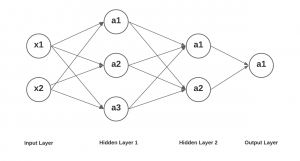
In this post, you will learn about concepts of neural networks with the help of mathematical models examples. In simple words, you will learn about how to represent the neural networks using mathematical equations. As a data scientist / machine learning researcher, it would be good to get a sense of how the neural networks can be converted into a bunch of mathematical equations for calculating different values. Having a good understanding of representing the activation function output of different computation units / nodes / neuron in different layers would help in understanding back propagation algorithm in a better and easier manner. This will be dealt in one of the …
Adaptive Linear Neuron (Adaline) Python Example

In this post, you will learn the concepts of Adaline (ADAptive LInear NEuron), a machine learning algorithm, along with Python example.As like Perceptron, it is important to understand the concepts of Adaline as it forms the foundation of learning neural networks. The concept of Perceptron and Adaline could found to be useful in understanding how gradient descent can be used to learn the weights which when combined with input signals is used to make predictions based on unit step function output. Here are the topics covered in this post in relation to Adaline algorithm and its Python implementation: What’s Adaline? Adaline Python implementation Model trained using Adaline implementation What’s Adaptive …
I found it very helpful. However the differences are not too understandable for me